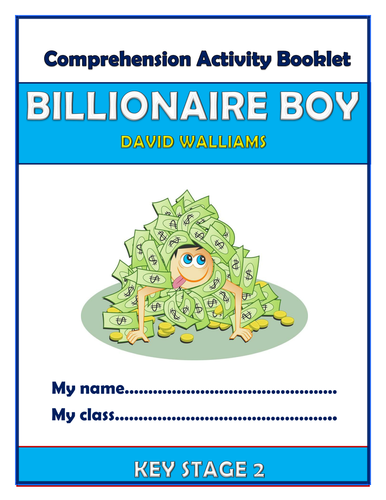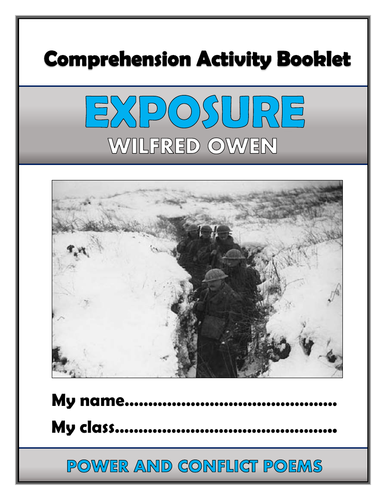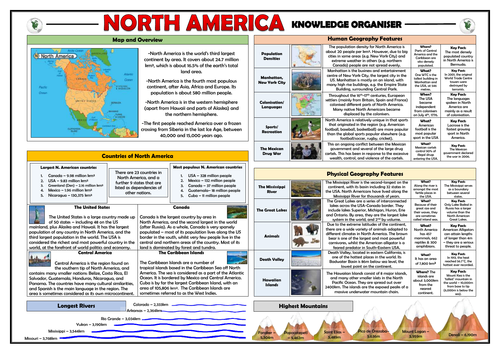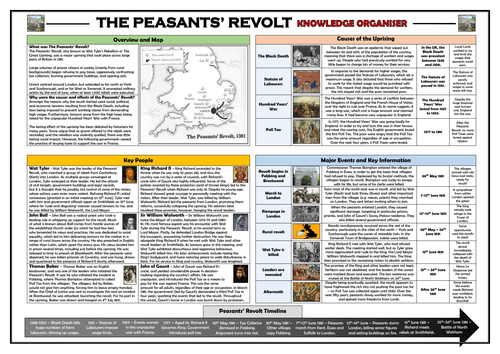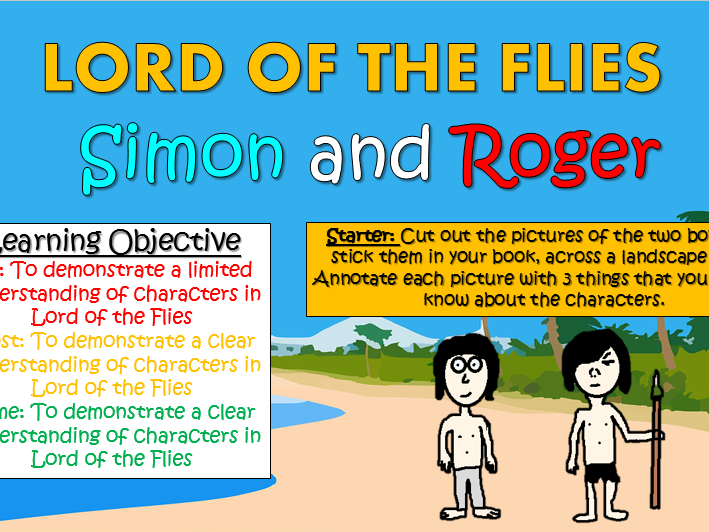
3k+Uploads
2085k+Views
2367k+Downloads
All resources

Informal Letter Writing Helpsheet!
A learning mat/ helpsheet to aid children when writing informal letters. Includes how to structure an informal letter, a model example, plus features of content and language to include.
Included in PDF (to prevent formatting issues between computers) and Word (so that you can edit it if you need to).
Please also take a look at my ‘Informal Letter Writing’ lesson, which utilises this resources alongside many others. Thank you!

The Boy in the Striped Pyjamas - KS3 Comprehension Activities Booklet!
This resource booklet contains a wide range of age-appropriate, engaging, and meaningful comprehension activities for use throughout the reading of John Boyne's 'The Boy in the Striped Pyjamas.' Teachers have found them particularly useful in comprehension or guided reading sessions. They are perfect for aiding the progress of children towards meeting the KS3 expectations within the new National Curriculum framework. Children have found these resources extremely engaging, and for teachers there is explicit information within each task regarding which comprehension strands the task is designed to demonstrate. They also relate to key extracts, characters, and themes from the story, ensuring that children gain a deep understanding of the text.
Activities within the booklet include:
- 'Context: The Holocaust' - to enable students to demonstrate that they can: 'Know the purpose, audience and context of the writing and drawing on this knowledge to support comprehension.'
- 'Boyne's Description - The Ending' - to enable students to demonstrate that they can: 'Know how language, including figurative language, vocabulary choice, grammar, text structure and organisational features, present meaning.'
- 'Bruno's Father' and 'Shmuel' - to enable students to demonstrate that they can: 'Study setting, plot, and characterisation, and the effects of these.'
- 'Vocabulary Inspector' - to enable students to demonstrate that they can: 'Learn new vocabulary, relating it explicitly to known vocabulary and understanding it with the help of context and dictionaries.'
Plus many, many more activities (the booklet is 21 pages in length!) I've also added it as a PDF in case the formatting differs on your computer.
All images are licensed for commercial use, and are cited on a separate document (included).

Writing Purposes - Helpsheets/Posters for Literacy and English
These handy helpsheets have been employed by teachers across the curriculum to aid students completing extended writing tasks for a particular purpose. There are helpsheets for:
- Informing
- Describing
- Analysing
- Arguing
- Explaining
- Evaluating
- Persuading
- Instructing
Each helpsheet defines the aim of the writing purpose, details the key writing features to be used, offers sentence starters, and gives a short example of the writing purpose, alongside other hints and tips.
These helpsheets have also been blown up to A3 or A2 size to become engaging and interactive literacy across the curriculum posters.
Bundle Sale

Holes Huge Bundle!
THIS BUNDLE CONTAINS ALL OF THE HOLES LESSONS, IN ADDITION TO THE COMPREHENSION BOOKLET, THE KNOWLEDGE ORGANISER AND THE POINTLESS GAME!
This engaging, varied, and informative scheme of learning is designed to help students gain understanding, assessment skills, and key interpretations of Louis Sachar's 'Holes.' Made up of a wide-range of interesting and exciting lessons, students should complete this scheme having gathered vital skills in: interpreting the significant meanings of the text, understanding the writer's ideas within the text, identifying the traits of key characters, settings, and themes, understanding dramatic and language devices, and relating the text to its social and historical context.
Stimulating, visual, and easily adaptable, these lessons provide suggested learning objectives and outcomes for students of a wide-range of abilities - The vast majority of tasks are differentiated to allow for different abilities and needs in your classroom. Each lesson loosely follows this logical learning journey to ensure that students learn in bite-size steps:
- Engaging
- Defining/ Understanding
- Identifying/Remembering
- Analysing/ Creating
- Peer or self evaluating.
All of the lessons are interactive, employ a variety of different teaching and learning methods and styles, and are visually-engaging. Resources, worksheets, and lesson plans are all provided.
Bundle Sale

Blood Brothers Huge Bundle!
THIS BUNDLE CONTAINS ALL OF THE ‘BLOOD BROTHERS’ LESSONS, IN ADDITION TO THE KNOWLEDGE ORGANISER, THE 30-PAGE COMPREHENSION BOOKLET, AND THE POINTLESS GAME!
This engaging, varied, and informative scheme of learning is designed to help students gain understanding, assessment skills, and key interpretations of Willy Russell’s play ‘Blood Brothers.’ Made up of a wide-range of interesting and exciting lessons, students should complete this scheme having gathered vital skills in: interpreting the significant meanings of the play, understanding the writer’s ideas within the text, analysing key characters, settings, and themes, and understanding Russell’s language devices.
Stimulating, visual, and easily adaptable, these lessons provide suggested learning objectives and outcomes for students of a wide-range of abilities - The vast majority of tasks are differentiated to allow for different abilities and needs in your classroom. Each lesson loosely follows this logical learning journey to ensure that students learn in bite-size steps:
Engaging
Defining/ Understanding
Identifying/Remembering
Analysing/ Creating
Peer or self evaluating.
All of the lessons are interactive, employ a variety of different teaching and learning methods and styles, and are visually-engaging. Resources, worksheets, and lesson plans are all provided.
Bundle Sale

The Merchant of Venice Lesson Bundle!
This engaging, varied, and informative scheme of learning is designed to help students gain understanding, assessment skills, and key interpretations of William Shakespeare’s ‘The Merchant of Venice.’ Made up of a wide-range of interesting and exciting lessons, students should complete this scheme having gathered vital skills in: interpreting the significant meanings of the play, understanding the writer’s ideas within the play, analysing key characters, settings, and themes, and understanding Shakespeare’s language devices.
Stimulating, visual, and easily adaptable, these lessons provide suggested learning objectives and outcomes for students of a wide-range of abilities - The vast majority of tasks are differentiated to allow for different abilities and needs in your classroom. Each lesson loosely follows this logical learning journey to ensure that students learn in bite-size steps:
Engaging
Defining/ Understanding
Identifying/Remembering
Analysing/ Creating
Peer or self evaluating.
All of the lessons are interactive, employ a variety of different teaching and learning methods and styles, and are visually-engaging. Resources, worksheets, and lesson plans are all provided.

Animal Farm: Context - The Russian Revolution
These resources enable students to understand the context of the Russian Revolution, the predominant subject of Orwell’s allegory within Animal Farm. More precisely, students learn about the key historical events and figures throughout this point in time in Russian history, and begin to comprehend Orwell’s intentions in writing the novella. These resources give students a strong foundation of knowledge which they can then utilise to begin confidently relating the text to its context. There are easily enough resources for at least two lessons within this resource pack.
Students learn through the following tasks:
- Gauging and collaborating previous knowledge through a discussion-based starter task;
- Watching, listening, and demonstrating their understanding of an engaging and informative context video and related activity sheet;
- Developing their understanding through in-depth investigative research into the main leaders of the Russian Revolution;
- Writing a letter from the viewpoint of a member of the Russian working class, who has lived through the various regimes and revolutions.
- Peer assessing their partners’ learning attempts.
The following resources are provided:
- Engaging and colourful step-by-step PowerPoint (includes links for video)
- Teacher lesson guidance/plan;
- Context worksheet;
- Five investigative research templates: Stalin, Lenin, Trotsky, Marx, and The Secret Police.
All images and videos are licensed for commercial use, and are cited on the final slide of the PowerPoint. Note - internet connection is needed for the video activity.

Year 2 Living Things and their Habitats: Knowledge Retrieval Activities Pack!
This resource offers a wide range of knowledge retrieval activities for those studying Living Things and their Habitats in Year 2.
It covers information including classification of animals, features of living things, classification of plants, key vocabulary and habitat changes.
There are a wide range of interesting and thought-provoking activities (over 30 slides in total) which help children to secure all of the important information from the unit. Research-approved activities include:
-Quick Fire Questions;
-Picture Stimulus;
-Retrieval Grid;
-Fill in the Blank;
-Vocabulary Busters;
-Fact Dump;
-Order 6;
-Detective/ Questioning Tasks;
-Anagrams;
These resources have been tried and tested in the classroom and have proven successful in helping children to consolidate key information within this unit.

Billionaire Boy - KS2 Comprehension Activities Booklet!
This resource booklet contains a wide range of age-appropriate, engaging, and meaningful comprehension activities for use throughout the reading of David Walliams' 'Billionaire Boy.' Teachers have found them particularly useful in comprehension or guided reading sessions. They are perfect for aiding the progress of children towards meeting the upper KS2 expectations within the new National Curriculum framework. Children love learning from these resources, whilst they are also of great use to teachers, as there is explicit information within each task regarding which comprehension strands the task is designed to demonstrate. They also relate to key extracts, characters, and themes from the story, ensuring that children gain a deep understanding of the text.
Activities within the booklet include:
- 'An Interview with Joe Spud' - to enable students to demonstrate that they can: 'Understand what is read by drawing on information from more than one paragraph, identifying key details that support the main ideas, and using quotations for illustration;'
- 'Walliams' Description' - to enable students to demonstrate that they can: 'Explain meanings of words that they know and ask the meaning of new words. Link the meaning of new words to words that they already know;'
- 'The Grubbs!' - to enable students to demonstrate that they can: 'Understand what is read by drawing on information from more than one paragraph, identifying key details that support the main ideas, and using quotations for illustration;'
- 'Figurative Language in Billionaire Boy' - to enable students to demonstrate that they can: 'Discuss and evaluate how authors use language, including figurative language, to create an impact on the reader.'
Plus many, many more activities (the booklet is 21 pages in length!) I've also added it as a PDF in case the formatting differs on your computer.
All images are licensed for commercial use, and are cited on a separate document (included).

Exposure - Wilfred Owen - Comprehension Activities Booklet!
This 16-page resource booklet contains a wide range of challenging and engaging comprehension activities for use throughout the reading of Wilfred Owen’s power and conflict poem Exposure.’ Teachers have found them particularly useful throughout teaching, or for exam revision or guided reading sessions. They are perfect for aiding the progress of students towards meeting the key English Literature assessment objectives - suitable for all examining bodies. Students have found these resources extremely engaging, and it is clearly highlighted within each task regarding which assessment strands the task is designed to demonstrate.
It is provided in both Word (to allow for easy editing) and PDF (to ensure for consistency of formatting between computers).
Activities within the booklet include (amongst many others):
‘Analysing Context’ - helping students to ‘Show understanding of the relationships between texts and the contexts in which they were written.’
‘Analysing Subject Matter, Language and Structure’ - to help students to ‘Analyse the language, form and structure used by a writer to create meanings and effects, using relevant subject terminology where appropriate.’
‘Diary Entry’ - to help students to ‘Use a range of vocabulary and sentence structures for clarity, purpose and effect, with accurate spelling and punctuation. Make an informed personal response, recognising that other responses to a text are possible and evaluating these.’
‘The Speaker’ - to help students to ‘Read, understand and respond to texts. Students should be able to: maintain a critical style and develop an informed personal response use textual references, including quotations, to support and illustrate interpretations.’

Africa Knowledge Organiser/ Revision Mat!
This clear, detailed and visually-appealing resource offers a complete reference point for students revising knowledge relating to Africa, as a part of their study of physical and human geography. It contains comprehensive sections on:
Overview and map;
Regions and Countries of Africa;
Longest Rivers;
Highest Mountains;
Human Geography Features;
Physical Geography Features.
The resource is designed to be printed onto A3, and is provided as both a PDF and a Word version (so that you can edit if you want to). All images used are licensed for commercial use and are cited on a separate document (included). The resource is most suitable for students in KS2 or KS3.

North America Knowledge Organiser/ Revision Mat!
This clear, detailed and visually-appealing resource offers a complete reference point for students revising knowledge relating to North America, as a part of their study of physical and human geography. It contains comprehensive sections on:
Overview and map;
Regions and Countries of North America;
Longest Rivers;
Highest Mountains;
Human Geography Features;
Physical Geography Features.
The resource is designed to be printed onto A3, and is provided as both a PDF and a Word version (so that you can edit if you want to). All images used are licensed for commercial use and are cited on a separate document (included). The resource is most suitable for students in KS2 or KS3.

Peasants' Revolt Knowledge Organiser/ Revision Mat!
This detailed and visually-appealing resource offers a complete reference point for students learning or revising knowledge of The Peasants’ Revolt of 1381. It contains comprehensive sections on:
Overview and map;
Timeline of major events
Key people Involved;
Causes of the uprising;
Summary of major events - dates, images, descriptions, and key facts;
The resource is designed to be printed onto A3, and is provided as both a PDF and a Word version (so that you can edit if you want to). All images used are licensed for commercial use and are cited on a separate document (included).

Holes - The Importance of the Past!
This engaging and informative lesson helps students to understand one of the main recurring themes in Louis Sachar’s Holes: The effect of the past upon the present. Students study several of the flashbacks in Sachar’s non-linear narrative, and establish how different objects, ideas, and settings are evidence of the links between past and present at Camp Green Lake.
The lesson follows a step-by-step learning journey, in which children learn through:
- Reading and understanding the selected extracts to comprehend how past and present events are linked at Camp Green Lake;
- Exploring different objects and ideas, such as the spiced peaches and the treasure, to demonstrate how different sub-plots are interwoven;
- Using textual evidence to show a deeper understanding of the writer’s purpose in linking the features of past and present together;
- Analysing how the effect of the past becomes an effective theme throughout the story;
- Peer assessing each other’s learning attempts;
Included is:
- Whole lesson PowerPoint - colourful and comprehensive;
- ‘Text Detectives’ worksheet - (PDF and Word versions);
- Selected extract - Chapter 7;
- Essay template for analytical paragraphs;
- Comprehensive lesson plan.
There are also opportunities for group learning, speaking and listening, peer assessment, and whole class discussion. I originally used these resources with year 7 and 8 classes, however colleagues have used them for between years 4 and 9 with minimal adaptations.
All images are licensed for commercial use, and image rights are listed on the last page of the presentation.

Holes Pointless Game (and template to create your own games!)
Based on the popular game show ‘Pointless’, this resource is perfect for use as a whole lesson resource, enrichment option, or revision tool. Editable, so that you can change to any other topic or change questions. (I’ve also added a blank template so that you can make your own games from scratch). Containing almost 30 slides of sound clips, interesting tasks, and suitably challenging questions, this resource is effective at both promoting engagement and enhancing learning. There are several full rounds of questions to build or revisit knowledge of characters, plot, and themes in ‘Holes.’
Round 1. The characters in Holes
Round 2. Quotations from the text
Round 3. Settings and Objects
Round 4. Themes in Holes
The nature of this game ensures that the resource can challenge students of all levels.
A blank template has also been added, so that you can create your own games!

Lord of the Flies: The Ending
This interesting and highly-stimulating lesson enables students to make clear and sustained interpretations about the final chapters of William Golding’s Lord of the Flies. Students engage analytically with the key events, characters, and quotations in the closing stages of the novel, and interpret patterns in the development of their behaviour from earlier sections of the text.
The lesson follows a clear, logical, bite-size learning journey, which guides students towards differentiated learning objectives. Over the course of this journey, they become able to:
- Sort key events from earlier chapters to re-familiarise themselves with the events of the text;
- Think creatively about how different objects, ideas, and characters are represented throughout different sections of the text;
- Read and understand Chapters Eleven and Twelve of the play, with a particular focus upon how the behaviour of the key characters has developed over time;
- Chart the balance between civilization and savagery over the course of the novel, justifying decisions based upon relevant textual evidence;
- Analyse the how the behaviour of the key characters alters over the course of the novel, through answering a structured exam-style question;
-Peer assess each other’s learning attempts.
This resource pack includes:
- A visually engaging whole-lesson PowerPoint presentation;
- Plot Cards for the card-sorting activity;
- Links to the extracts of the text needed for the lesson (Chapters Eleven and Twelve in this case);
- Graph template with justification boxes for the development activity;
- A logically scaffolded essay template;
- A detailed lesson plan, complete with what the teacher and students should aim to achieve at each stage of the lesson.
All images are licensed for commercial use, and are cited on the final slide of the PowerPoint.

Lord of the Flies: Simon and Roger
This interesting and highly-stimulating lesson enables students to gain a clear understanding of how the characters of Simon and Roger are introduced and developed in William Golding’s Lord of the Flies. Students learn to compare and contrast the two characters, with particular reference to their respective propensities for kindness and savagery.
The lesson follows a clear, logical, bite-size learning journey, which guides students towards differentiated learning objectives. Over the course of this journey, they become able to:
- Use illustrations to explain what they already know about each of the characters;
- Understand how each of the characters are introduced, and demonstrate an awareness of the role that they play on the island;
- Read and understand Chapters Eight, Nine, and Ten of the play, with a particular focus upon how the characters of Simon and Roger can be compared, and how they develop over time;
- Analyse key quotations about/by each of the characters,interpreting what this shows the readers about their characters;
- Complete a comparison between the two characters, in response to an essay-style question;
-Peer assess each other’s learning attempts.
This resource pack includes:
- A visually engaging whole-lesson PowerPoint presentation;
- Detailed worksheets, with answer sheets where necessary;
- Links to the extracts of the text needed for the lesson (Chapters Eight, Nine and Ten in this case);
- Original images for students to complete their annotations;
- A logically scaffolded essay template;
- A detailed lesson plan, complete with what the teacher and students should aim to achieve at each stage of the lesson.
All images are licensed for commercial use, and are cited on the final slide of the PowerPoint.

Create a Football Club Group Project - 2023-24 Season Update!
A Russian billionaire, Asman Veryrich, has approached you about setting up a new football club!
This exciting, engaging investigation activity allows students to control the direction of their own learning, through speaking, listening, discussing, and reasoning. I initially created these resources to provide something interesting for the students to engage with for their English Speaking and Listening discussions, but it has since been used across Maths (e.g. managing money effectively), Art and Design, and PSHE departments, as well as by form groups and holiday activity groups, to build teamwork and collaboration skills.
This version is now updated with the players for the 2023-24 football season!
Students get involved in all of the fun aspects of designing and setting up a new football club, including selecting a team of players, a manager, a stadium, and a training ground. They also design the team’s club badge and football kits. They also need to use their skills of literacy to read and understand key evidence, and skills of numeracy to ensure that they keep their expenses within budget! What is more, groups can compete against one another to create the most successful team in the league, as all of the resources that they choose can help them to acquire valuable league table points!
Included in this resource pack are:
Full PowerPoint lesson talking students through the process;
An 8 page team booklet, used to create their designs and calculate their budgets;
A pack of 96 player cards and 12 manager cards to select from;
Budget and recording sheets to track their progress;
An A3 football pitch to strategise and select their team.
Considering the time and effort that it took to create these resources, I think that they offer exceptional value. Whenever I have used this activity before, it has taken at least 3-4 lessons, including the introduction, design process, presentations, and evaluation. I originally have used this with mixed ability groups across upper KS2 and KS3, but colleagues have adapted it easily for students of all ages from KS2 upwards.

Year 6 Evolution and Inheritance Knowledge Organiser!
This clear, detailed and visually-appealing resource offers a complete reference point for Year 6 children, teachers and parents covering knowledge relating to ‘Evolution and Inheritance’, as a part of their science learning. It contains comprehensive sections on:
Overview;
Inheritance and Mutation;
Evidence of Evolution;
Adaptation;
Animal Adaptations;
Key Vocabulary (underlined).
The content is fully aligned with the NC expectations for Year 6 children relating to ‘Evolution and Inheritance:’
-Recognise that living things have changed over time and that fossils provide
information about living things that inhabited the Earth millions of years ago;
-Recognise that living things produce offspring of the same kind, but normally offspring vary and are not identical to their parents;
-Identify how animals and plants are adapted to suit their environment in different
ways and that adaptation may lead to evolution.
The resource is designed to be printed onto A3, and is provided as both a PDF and a Word version (so that you can edit if you want to). All images used are licensed for commercial use and are cited on a separate document (included).

Year 6 Living Things and their Habitats Knowledge Organiser!
This clear, detailed and visually-appealing resource offers a complete reference point for Year 6 children, teachers and parents covering knowledge relating to ‘Living things and their habitats’, as a part of their science learning. It contains comprehensive sections on:
What you should already know (from learning in earlier years);
In-depth Classification of Animals;
Linnaeus Classification;
Classification in Habitats;
Classification of Humans;
Key Vocabulary.
The content is fully aligned with the NC expectations for Year 6 children relating to ‘Living things and their habitats’:
-Describe how living things are classified into broad groups according to common
observable characteristics and based on similarities and differences, including microorganisms, plants and animals;
-Give reasons for classifying plants and animals based on specific characteristics.
The resource is designed to be printed onto A3, and is provided as both a PDF and a Word version (so that you can edit if you want to). All images used are licensed for commercial use and are cited on a separate document (included).









